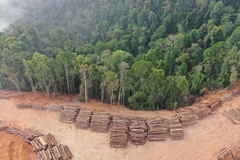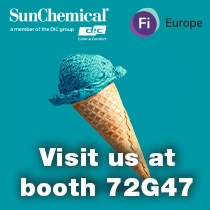US and Others Restrict Some Japanese Food Imports
Australia and Singapore have joined the U.S. and Hong Kong in restricting food imports from Japan as elevated radiation levels were found outside an evacuation radius around the damaged Fukushima Dai-Ichi nuclear plant.

3/24/2011 --- The United States and several other countries have said that they will block imports of milk and fresh produce from areas of Japan, near the crippled Fukushima Dai-Ichi nuclear plant nuclear power plant.
The World Health Organization said in a statement posted on its website that the presence of radioactivity has been confirmed in milk and some vegetables. “The findings suggest that some foods produced in Japan are likely to be contaminated by radionuclides at levels unsuitable for human consumption. Food producers and consumers in Japan are those most immediately affected and are being advised by their government on the implications of these findings. Currently, however, there is no evidence that radioactivity from the Fukushima Daiichi nuclear power plant has contaminated food produced in any other country,” according to the WHO.
The US Food and Drug Administration (FDA) reported that it has halted milk, vegetable and fruit imports from areas near the tsunami-smashed nuclear plant.
The move was followed by news that Australia and Singapore have joined the U.S. and Hong Kong in restricting food imports from Japan as elevated radiation levels were found outside an evacuation radius around the damaged Fukushima Dai-Ichi nuclear plant.
Singapore suspended imports of milk and milk products, fruit and vegetables, seafood and meat from areas affected by the nuclear power accident, the nation’s Agri-Food & Veterinary Authority (AVA) said. In a statement, the AVA reported that, “In view of the recent developments, AVA has taken the precautionary measure to immediately suspend the import of milk and milk products, fruits and vegetables, seafood and meat from Fukushima, Ibaraki, Tochigi and Gunma. The suspension is in line with the precautionary approach adopted by other countries such as U.S and Australia. Meanwhile, AVA will continue to closely monitor and test imports of food from Japan.”
Less than 2 percent of Singapore’s imported seafood comes from Japan, and less than 0.5 percent of imports of other food products come from Japan, the Agri-Food & Veterinary Authority of Singapore said in a March 14 statement.
Food Standards Australia and New Zealand (FSANZ) reported that as a precautionary measure, and consistent with approaches internationally, FSANZ has requested the Australian Quarantine and Inspection Service (AQIS) to institute a Holding Order for all foods of interest originating from the Japanese prefectures of Fukushima, Gunma, Ibaraki and Tochigi. Foods of interest in this context are milk and milk products, fresh fruit and vegetables, seaweed and seafood (fresh and frozen). “FSANZ remains of the view that the risk of Australian consumers being exposed to radionuclides in food imported from Japan is negligible. Milk and milk products and fresh produce are not imported into Australia, while imports of seaweed and seafood represent a very small proportion (5.5% and 0.46% respectively) of Australia’s total imports of these products,”the Agency said.
So far, the European Union has said that it has no immediate plans to ban food imports from Japan. In the UK, the Food Standards Agency reported that it is working with port health authorities and other Government departments to ensure that food imports from Japan, mainly fish and shellfish, are screened for the presence of radioactive material. Only 0.1% of food imports received by the UK come from Japan, but any food that is found to have levels of radiation above the legal limits will be prevented from entering the country.
The FSA is having ongoing discussions with the Japanese food authorities, as well as other national food safety authorities and is sharing information and intelligence. Food safety advice has been provided to British nationals and visitors in Japan through the Foreign and Commonwealth Office.
The FSA note to consumers that there are some common sources of natural radioactivity in food, one of which, for example, is a component of potassium called potassium 40. It forms 0.012% by weight of all natural potassium and occurs in the cells of all living things. Natural radioactivity can also be transferred to crops from rocks and minerals present in the soil, while drinking water can pick up radioactivity from the earth, and fish and shellfish can take up radioactivity from the water or sea floor. Artificial radioactivity can get into food after it has been discharged into the environment from civil or military nuclear operations. It then passes through the food chain in the same way as natural radioactivity.
Radioactivity can damage the body's DNA. While low radiation doses can be repaired but higher doses can change our body's cells. In these cases cancer can develop.













